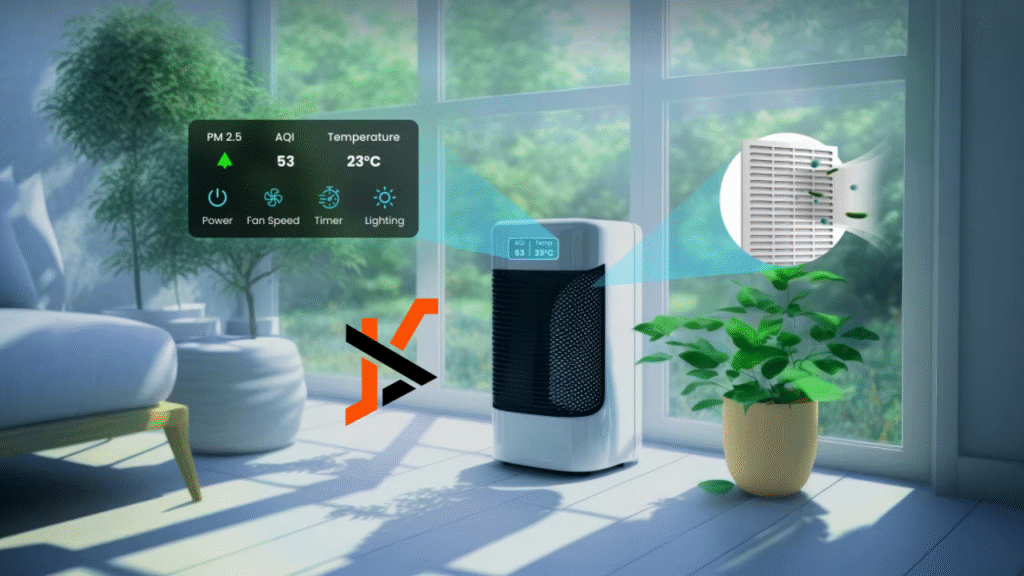Let’s face it—air quality isn’t what it used to be. From city smog to indoor allergens, we’re constantly surrounded by invisible threats to our respiratory health. That’s where an air purifier becomes not just a luxury, but a necessity. Whether you’re trying to reduce allergies, protect your family, or just enjoy a fresher indoor environment, an air purifier is a smart move.
But with so many models and claims out there, how do you choose the right one? And what should you even expect from it? This article breaks it down in plain English—so you don’t need to be a scientist to understand the science.
What Is an Air Purifier?
At its core, an air purifier is a device designed to clean the air. It removes pollutants like dust, allergens, odors, smoke, and even microscopic particles such as bacteria and viruses.
Some air purifiers use filters (like HEPA), while others use UV light or activated carbon. The goal? Trap or destroy particles before they reach your lungs.
Why You Need an Air Purifier at Home
Here’s why investing in an air purifier makes sense:
- Allergy Relief: Pet dander, pollen, and mold spores can cause year-round discomfort.
- Asthma Support: Clean air helps reduce respiratory triggers.
- Odor Removal: Cooking smells, pet odors, and smoke are minimized.
- Airborne Virus Protection: Some models can trap or kill bacteria and viruses.
- Better Sleep: Clean air promotes better breathing and a more restful night.
The best part? You don’t need to break the bank. Even compact models like the Smell Away® Odour Neutraliser and Dust Remover offer powerful features at an affordable price.
Key Features to Look For
When choosing an air purifier, don’t get distracted by flashy buzzwords. Focus on the essentials:
1. Filtration System
Look for multi-layer filters:
- HEPA filters trap 99.97% of particles.
- Activated carbon filters absorb odors and gases.
- Pre-filters catch larger debris like hair and dust.
2. CADR Rating
Clean Air Delivery Rate measures how effectively the purifier cleans the air. Higher numbers = faster purification.
3. Coverage Area
Choose a model suited for your room size. Using a small purifier in a large living room won’t cut it.
4. Noise Levels
You want a machine that works silently in the background, especially in bedrooms or offices.
5. Portability and Maintenance
Lightweight, compact models with washable filters are user-friendly and budget-friendly.
Trending Air Purifier Technologies
Technology in air purification keeps evolving. Here are some innovations to watch for:
- Smart Sensors: Adjust the purifier automatically based on pollution levels.
- App Integration: Control your unit from your phone.
- UV-C Light: Destroys bacteria and viruses.
- Ionizers: Release negative ions to bind with particles (though they should be ozone-free).
Some compact units—like the Smell Away® Odour Neutraliser and Dust Remover—are designed to remove both odors and dust without the hassle of complex settings or bulky designs.
Common Air Quality Issues at Home
You might think your home is clean, but indoor air can actually be 2 to 5 times more polluted than outdoor air. Why?
- Cooking fumes
- Pet dander
- Cleaning chemicals
- Dust mites
- Mold spores
- Outdoor pollutants that sneak inside
These can build up, especially in tightly sealed homes with poor ventilation.
Benefits of Using an Air Purifier
Let’s break down how an air purifier improves your daily life:
✅ Healthier Breathing
People with asthma or allergies often feel immediate relief.
✅ Improved Sleep Quality
Cleaner air = less nighttime coughing or sneezing.
✅ Eliminates Odors
From last night’s dinner to your cat’s litter box.
✅ Boosts Immunity
By reducing your exposure to bacteria and viruses.
✅ Protects Children and Elderly
Their immune systems are more sensitive to pollutants.
Challenges to Consider
While air purifiers offer many benefits, here are some limitations to be aware of:
- Filter Maintenance: Filters need cleaning or replacement to stay effective.
- Limited Coverage: One unit can’t clean your whole house—consider one per room.
- Electricity Use: Some high-powered units may consume more energy.
- Initial Cost: Premium models can be pricey (though budget-friendly options like Smell Away® exist).
Being aware of these helps you make a smarter, long-term decision.
Tips for Getting the Most Out of Your Air Purifier
Maximize your air purifier’s performance with these simple steps:
- Keep doors and windows closed when in use.
- Vacuum regularly to remove floor dust.
- Don’t block the airflow—place it in open areas.
- Change filters as recommended.
- Use it consistently—24/7 use is ideal in polluted environments.
How to Tell If It’s Working
Here’s what you might notice:
- Less dust on furniture
- Reduced sneezing or allergy symptoms
- Stale odors disappearing
- Improved energy levels or fewer headaches
These small signs mean it’s doing its job well.
Real-World Applications: From Homes to Offices
Air purifiers aren’t just for homes. They’re also making waves in:
- Workspaces: Helps reduce sick days by filtering out airborne germs.
- Schools & Daycares: Protects kids from airborne infections.
- Gyms: Eliminates sweaty odors and airborne particles.
- Healthcare Clinics: Keeps air clean for vulnerable patients.
Compact, effective options like Smell Away® Odour Neutraliser and Dust Remover are perfect for desks, small rooms, or on-the-go setups.
Final Thoughts
Clean air is no longer something we can take for granted. From allergies and asthma to everyday odors and dust, an air purifier is one of the simplest ways to improve your quality of life indoors. It’s an investment in your health—and the health of everyone who shares your space.

